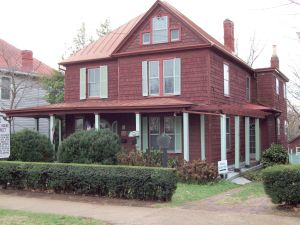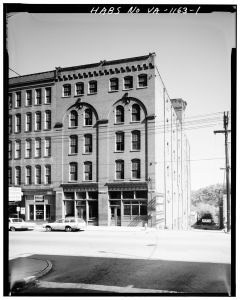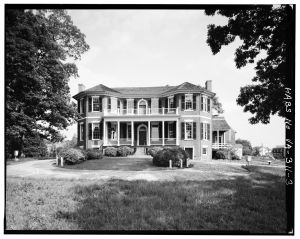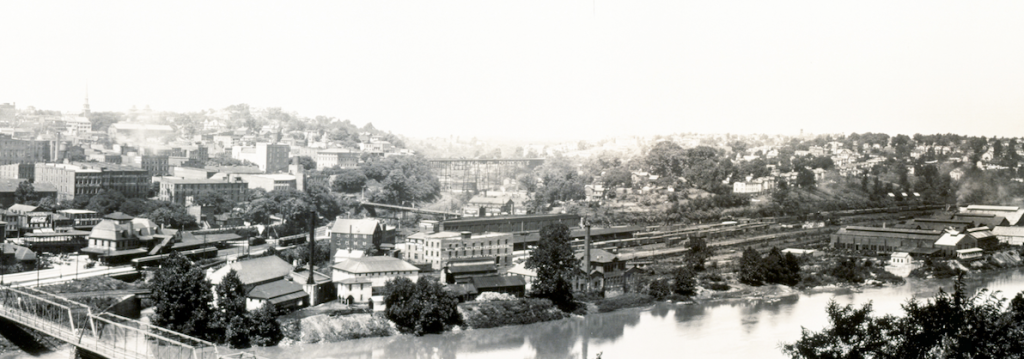Easily identified for being the home of Liberty University, Lynchburg also contains many pieces of meaningful history that dot the seven hills. Some of the more prominent hallmarks of the city’s history include the following.
The Anne Spencer House
On 1313 Pierce St. sits the burgundy, green-shuttered former home of Anne Spencer, a Harlem Renaissance poet and activist. Poetry Foundation details Spencer’s significant contribution to art, her impressive life and her death.
“Thirty of her poems were published during her lifetime, in such anthologies as ‘The Book of American Negro Poetry’ (1922) and ‘Caroling Dusk’ (1927),” Poetry Foundation says. “She was the first African American female poet to be featured in the ‘Norton Anthology of Modern Poetry’ (1973).”

Photo retrieved from the Library of Congress
Her final resting place can be found at Forest Hills Cemetery here in Lynchburg, and her home is memorialized for future generations’ benefit.
The Anne Spencer House & Garden Museum website further explains why the house is significant.
“Her home and garden served as a gathering place for leading African Americans such as W.E.B. Du Bois, Zora Neale Hurston, Langston Hughes and Martin Luther King, Jr.,” the website says.
To plan a trip to the house and garden, visit www.annespencermuseum.org.
Buzzards Roost
During the 1800s, downtown Lynchburg was a more unsavory place than its current coffee-shop-filled streets. The James River facilitated a constant flow of goods, traffic and workers who wanted places to stay. Commerce Street provided this in the form of its red-light district.
Buzzards Roost, a popular “sporting house” at that time, was a magnet for brawls and unfortunate events.

Photo retrieved from the Library of Congress
Today, one of the old buildings in the vicinity has been repurposed into an antique shop that shares the name of the former neighborhood in which it stands.
According to the antique shop’s website, “Buzzards Roost had the reputation as one of the worst slums any police department ever had to contend with and was in the zenith of its notoriety during the canal’s packet boat days.”
Its rather peaceful purpose today is to rehouse beautiful period pieces of furniture and to educate on its own history.
To visit Buzzards Roost, make an appointment by calling (434) 847-4368 or peruse its online store at this website.
Point of Honor
Nestled between a double row of apple trees and a beautiful view of the James River lies Point of Honor, a stately, pre-civil-war home-turned-museum.
The News & Advance wrote a piece on the historical significance of Point of Honor and quoted an excerpt from Allen Chambers’ book “Lynchburg: An Architectural History.”
“The broad expanse of lawn in front of the house served in the early 19th century as a dueling ground, and it was the bloodless, and honorable, conclusion of one of these that is thought to have given the house its name, Point of Honor,” Chambers said.

Photo retrieved from the Library of Congress
However, Virginia History’s website calls into question the validity of Chambers’ statement.
“The ‘Point’ in the property’s name refers to the land overlooking the James, but the derivation of ‘Honor’ remains a mystery; there is, for instance, no record of a duel being fought on those grounds,” the website says.
Whether one believes in the validity of Chambers’ claim or not, Point of Honor is a historical landmark full of history and opportunities for the curious to learn. In addition, the site has hosted plays by Lynchburg’s City on a Hill Youth Theater, Easter egg rolls and fall festivals.
To plan a visit to Point of Honor, visit this website.
Glen is the social media and web manager. Follow her on X

